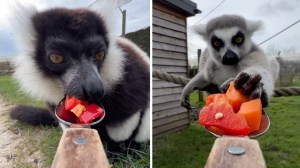In a tasty episode of the PBS series Otherwords, host Dr. Erica Brozovsky, PhD of the University of Texas at Austin presents the etymological origins behind the names of common foods around the world.
It shouldn’t matter what a food is called as long as it tastes good, right? Well, maybe not.
Brozovsky further explains that the names of many foods had to be changed due to marketing reasons. This includes kiwis.
Since they were from China and tasted a bit like gooseberries, they named them,… Chinese gooseberries. But when Chinese gooseberries finally made it to America 50 years later, they didn’t sell so well. And the importers blamed the name. First, they tried melonettes, since they looked kind of like little melons, and then finally settled on kiwifruits, named after the adorable fuzzy birds of New Zealand.
Also listed are different types of fish and prunes.
The ocean is full of lots of weird-looking creatures with unappetizing names. If you’re a fisherman who catches slime heads, toothfish, rockfish, or lizardfish,…How about orange roughy, Chilean sea bass, Pacific snapper, or even Bombay duck? …In 2000, the FDA approved the California Prune Board’s request to rebrand the prune to the dried plum. Why? Because of their digestive benefits, prunes had come to be associated with elderly people and bowel problems, two things advertisers don’t like to mention when they’re marketing toward the cool kids.






